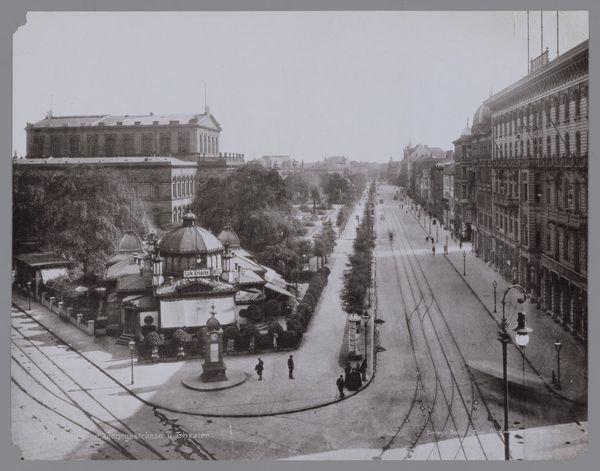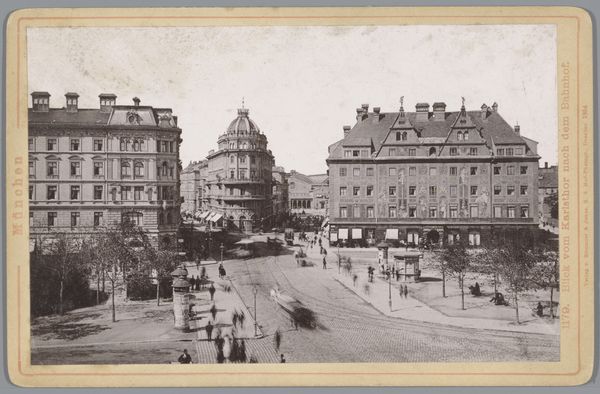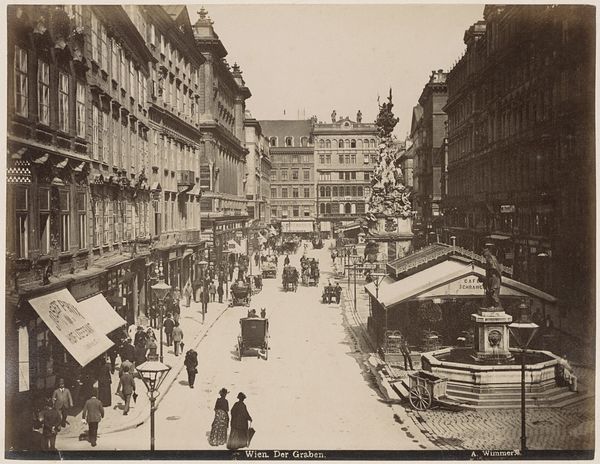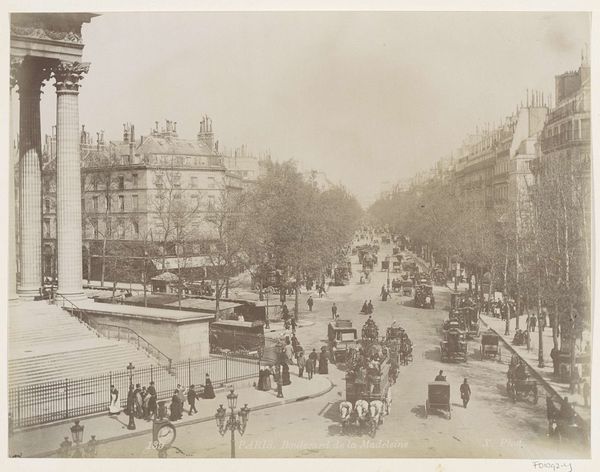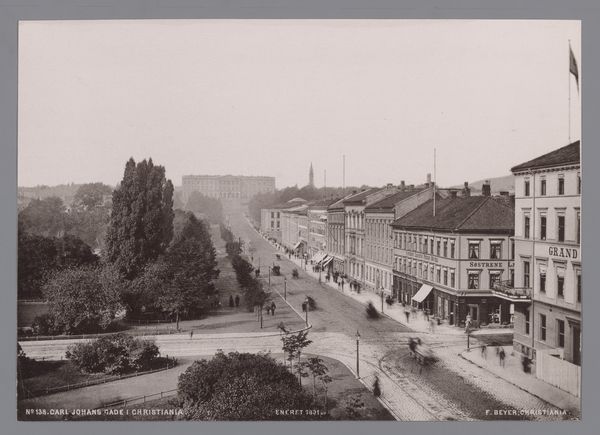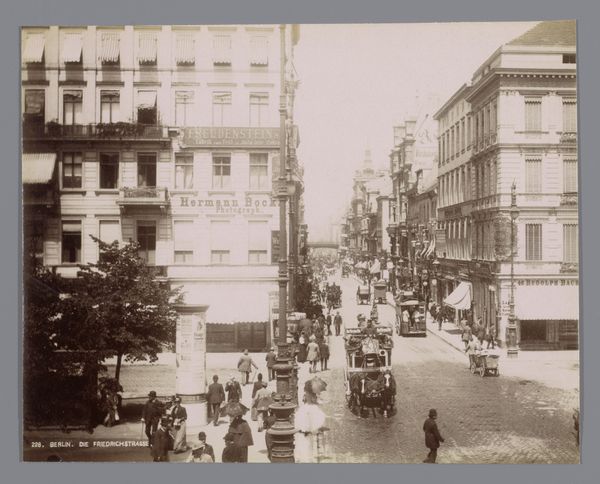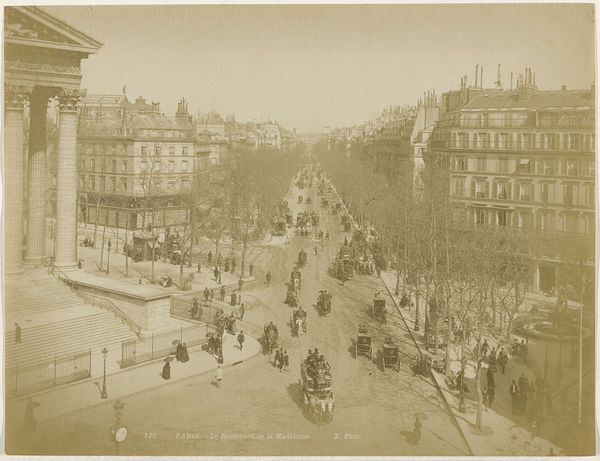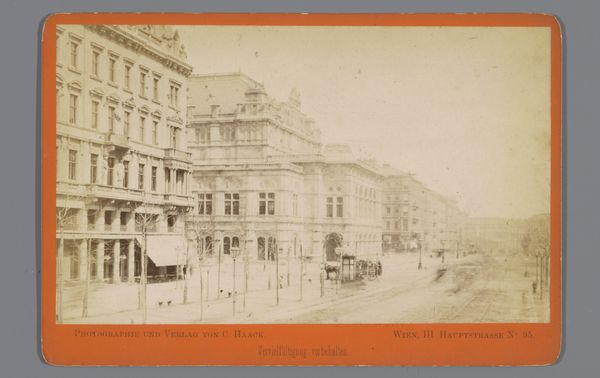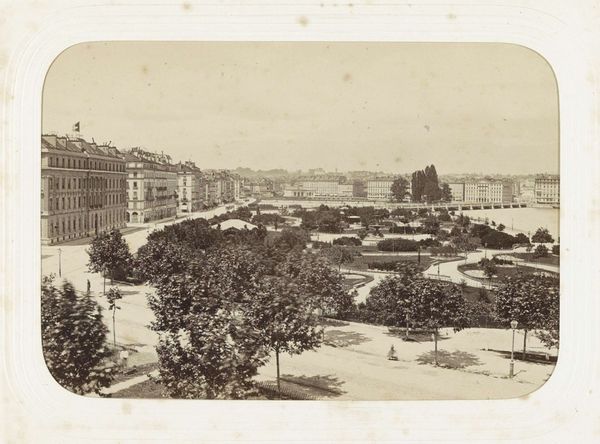
Gezicht op de Frans-Josefskade in Wenen met winkels, gebouwen, trams en karren c. 1880 - 1895
0:00
0:00
photography, gelatin-silver-print
#
impressionism
#
outdoor photograph
#
atmospheric exterior photography
#
outdoor photo
#
photography
#
historical photography
#
gelatin-silver-print
#
monochrome photography
#
cityscape
#
monochrome
Dimensions: height 202 mm, width 264 mm
Copyright: Rijks Museum: Open Domain
Curator: Ah, I’m drawn to this photograph… It feels like a forgotten dream, or a memory just beyond my grasp. Editor: Indeed. This gelatin-silver print, likely created between 1880 and 1895 by A. Wimmer, offers a fascinating glimpse into Vienna's Franz-Josefskai. What strikes me most is the visible infrastructure of a society on the cusp of massive change. Curator: You’re right. There's something deeply melancholy about it, don’t you think? Perhaps it’s the monochromatic palette, or the soft focus, but the whole scene appears draped in a wistful haze. A bygone era, caught in amber. It feels like I'm standing at the edge of modernity, looking back. Editor: The photograph speaks to the rise of the bourgeoisie and the rapid urbanization reshaping European cities at that time. We see evidence of industrialization with that lone smokestack on the horizon. There’s tension between progress and tradition, wealth and poverty all in this one shot. Curator: Absolutely. The artist is capturing a slice of urban life – the hustle and bustle of commerce with shops lining the streets, contrasted with the leisurely pace of people strolling along the quai. Look at those horse-drawn carriages mixing with the early trams! I see ghosts within ghosts of a city moving with time and the changing forms of transportation. Editor: Consider, too, that access to photography would have been increasingly available, enabling the depiction of quotidian life. This artwork provides a sense of the cultural atmosphere during that time and makes you question whose perspective Wimmer documents and perhaps prioritizes, whose stories we aren’t seeing here. Curator: And yet, within this carefully constructed representation of Vienna, I detect echoes of what's excluded. Which neighborhoods and which faces are purposefully erased in this documentation? What voices of marginalized members were not allowed in such settings? This is why there's a melancholy clinging to my own reception. Editor: Your point highlights the power dynamics inherent in visual representation. By looking at cityscapes such as these, one might be able to confront blind spots or reveal the hidden realities and underlying politics of identity in fin-de-siècle Vienna.
Comments
No comments
Be the first to comment and join the conversation on the ultimate creative platform.
